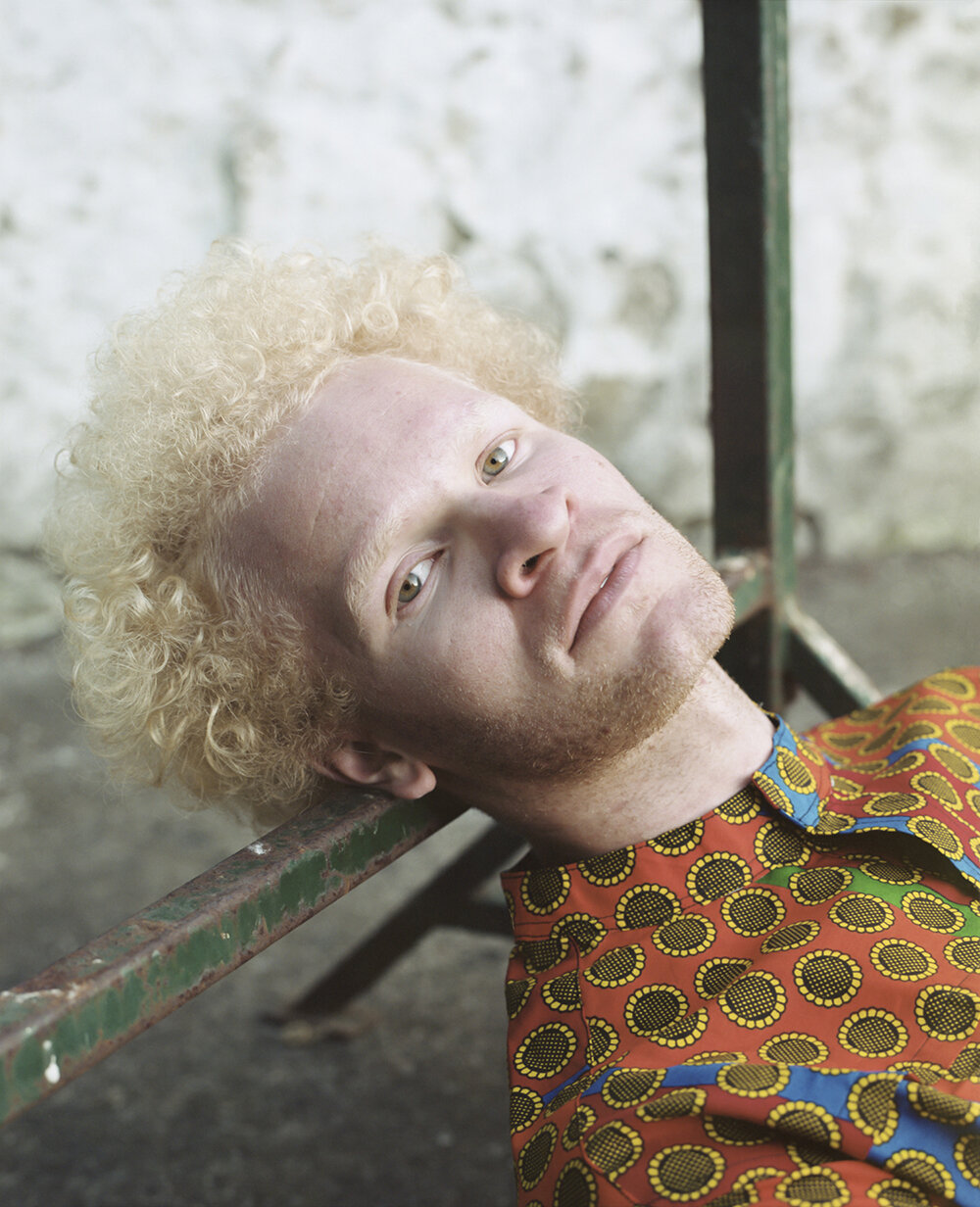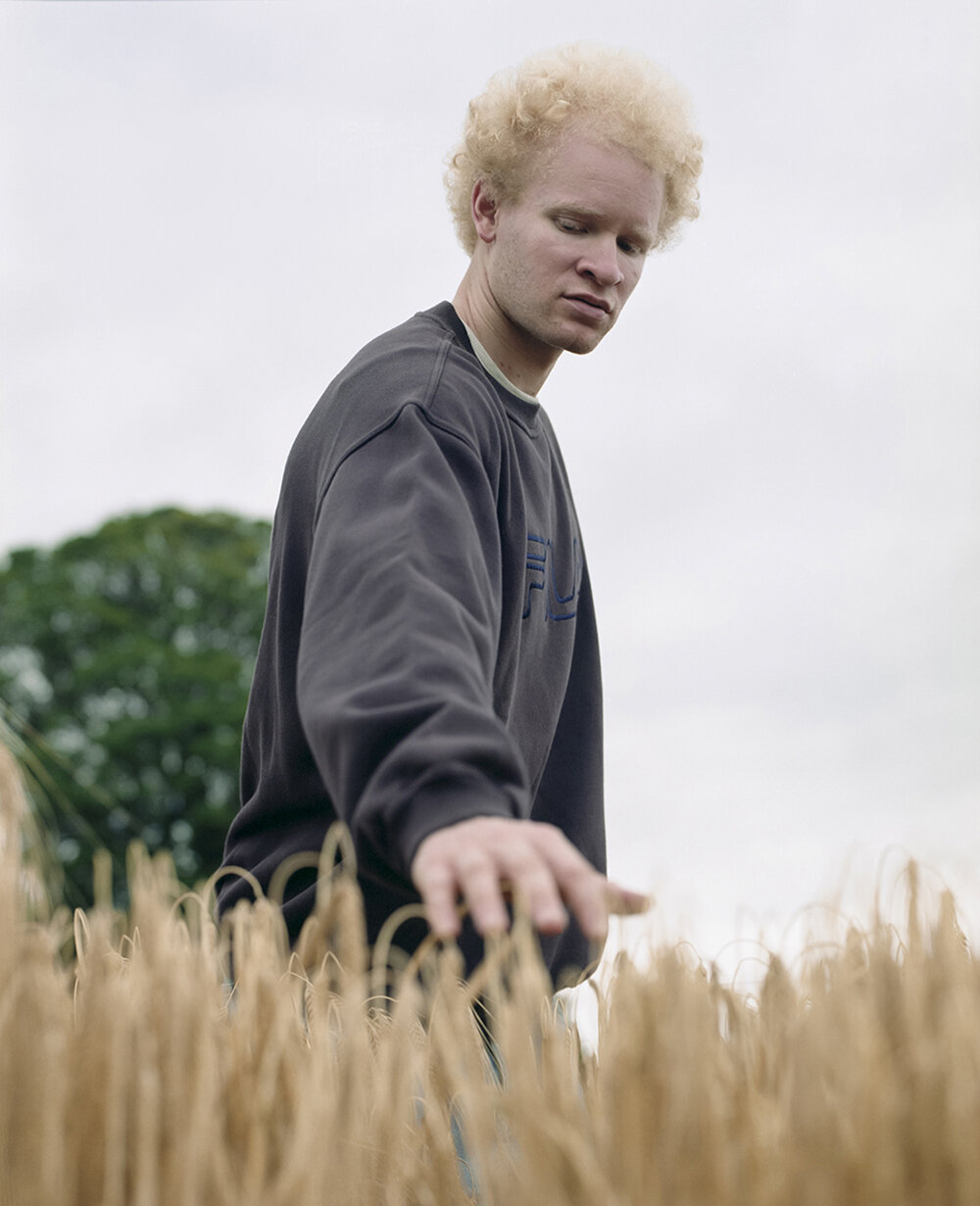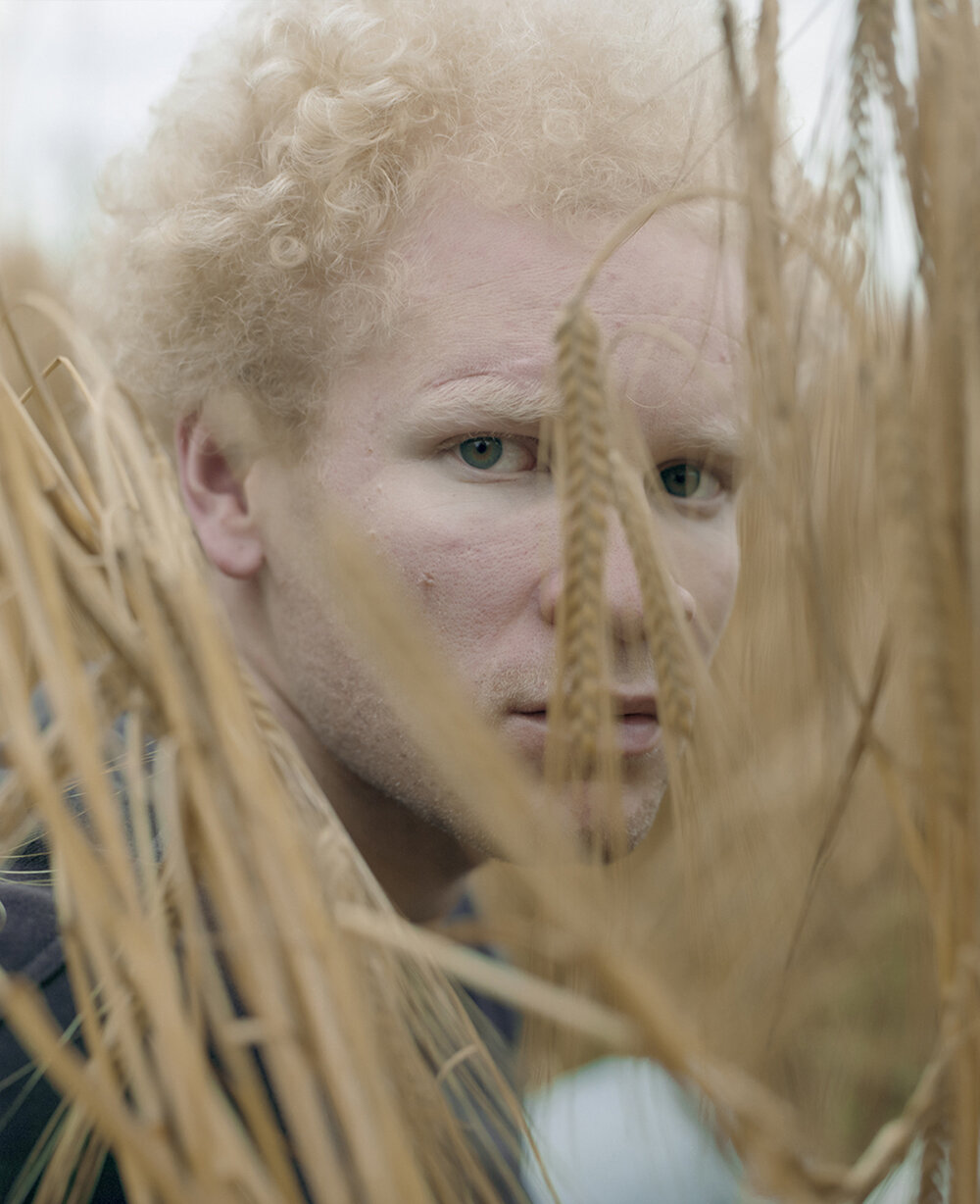Kir Lykkeberg and Mathias Teko Foley - Constructed Memories
Last spring, two long-time friends–Kir Lykkeberg and Mathias Teko Foley–were reunited by chance in Dublin. The pair originally met at university where they both studied photographic communication in a tight-knit class that grew close despite their different backgrounds, photographic styles and standpoints in life. After finishing their degrees, both Kir and Mathias sought a change of scenery and made their way to Dublin. This happening led to Mathias’ suggestion of a collaborative project which he hoped could visualize the places and memories that have had an impact on his lifelong search for identity. ‘I always admired Kir’s creative approach, dedication to film and sense of aesthetics,’ he says,‘and since we’ve collaborated on different projects before, it just made sense to do this project together.’ Therefore, with Kir behind the lens, Constructed Memories centres around Mathias, specifically his identity as half Danish, half Togolese, and born with albinism. Mathias was initially inspired by an editorial called Cover Boy photographed by Fanny Latour Lambert with model Shaun Ross. Ross, who was also born with albinism, is seen in the series posing with old world maps, typewriters and dark velvet armchairs. In one shot, Ross can be seen in a dream-like state with his head resting on a globe– this meditation on place and belonging was the birth of Mathias’ inspiration, and set him on a course of thinking of the places which have molded his own identity. The first place, is of course, Denmark–where Mathias was raised in a typical suburban environment. However, growing up with such convention often emphasized his stark differences in appearance.
- Alexa Fahlman
“My mum’s white and from Denmark and my dad is black and from Togo in West Africa. I was born with albinism, which is quite an unusual combination in Denmark, especially in the small town I grew up. From an early age, I felt a lack of belonging. my albinism and African features made me stand out, and as much as I wanted to fit in and feel normal, I never succeeded. My brother, who sadly passed away when I was a kid, also had albinism and was the sole person I could relate to at the time, it was an incredibly frustrating time where I often was seen as a very pale white kid and people rarely noticed my African features. For some people, my broad nose gave it away. I began to rebel against the norm and spent my childhood and teenage years chasing uniqueness through the way I dressed, my hairstyles and my hobbies."
In 2002, Mathias’s father moved to Edinburgh. This became the place in which Mathias first saw the world in pictures, and where his photographic interest and appreciation for nature were born, ‘I could now use my camera to tell the stories I wanted to tell and share the emotions I wanted people to feel. I could express myself without saying a word which, ironically, spoke to me.’ The next place is Paris–the first place in which Mathias met members of his extended African family. It was here where hard labour and opportunity coalesced to create the foundation for his intense drive and determination. Following Paris, Mathias’ trip to Togo served as both a meeting place of heritage, and disconnect; the latter due to Mathias’ albinism which masked his physical sense of belonging. The final place of significance is California, where Mathias spent five months navigating the American dream. Yet, the ‘dream’ was inevitably characterized by America’s racial problems and gross injustice, to which Mathias thus began to look differently at his own future and dreams.
Using written fragments of Mathias’ past experiences alongside his portraits shot by Kir, the project is an effort to reconstruct the feelings and memories of these five places. Imbued with symbolism, character and identity, Kir’s photographs and Mathias’ writing dive into the elusive character of memory and its effect on our identity. While we often think of our memories as static and retrievable, they are in fact erratic and flexible to change each time we try to recall them. The memories we live with are a mixture of our own recollections, collective memories, tales told to us by others, and lived fantasies from the media we consume such as movies, shows, or video games. Moreover, ‘We often talk about memory as dreaming our way back to something that happened int he past, which in itself implies an altered version of what actually occurred,’ says Kir, ‘photography too is a funny medium.’ In one sense, the photo captures a memory, yet it is an edited moment of truth. We’re in an age now where photos have become a physical inventory of our memories; photos shot on our phones speak to the certain moments we want to remember. Yet, how many of those thousand archived moments would have been just as easily forgotten had we not taken a photo? Are we becoming too reliant on photographs to trigger our memories, and can we recall them once the photo has been trashed into the abyss? Kir elaborates:
The photographs I create with my cameras are more meaningful and personal, but this also makes them an altered truth. even though I might not edit them in photoshop, I still affect the outcome by choosing the film, framing the picture, paying attention to details and considering the light and so forth. I captured my version of the given moment and I ’m sure this makes the memory of this moment much more emotionally charge than it actually was. I think the same duality exists in today’s visual world. Technology allows us to capture the raw reality, but also to change it dramatically. We have to question everything we see, and I wonder whether our emotional brain keep up with the constant filtering of all this visual information.
The pandemic has only exacerbated this dichotomy between the photograph and memory. As our phones or facebook remind us of “on this day” from a year or two ago, we’re likely to romanticize moments which were once equally insignificant as they are now important; we look to these photos as markers of life before the pandemic. For now, however, Kir notes, like many other photographers, that the pandemic has been a mixture of respite and frustration. As a photographer who specializes in portraiture, the forced disconnect between people has been challenging. ‘When is it responsible to reach out to people, to strangers, for a photographic project I could easily postpone?' she asks. However, the down tempo of has had its benefits, such as the time to focus creative energies into other outlets. Mathias has similarly taken the time to slow down and reflect on what he wants to do, and where he wants to be. He realized, “I want to be closer to my family and friends, so I decided to move back home–apparently it took a pandemic for this to happen."
When asked what they each hoped for viewers to take away from this series, Kir says, ‘I hope people will reflect on their owns means of belonging and how different places and environments have shaped their identity, but also that they will think twice next time they encounter a story different from their own, and meet this with an open mind and an understanding of the complexity that goes into every individual.’ Mathias adds, ‘Our project shines light on one man’s story, but there are many people out there who are still waiting to be heard and understood.’
















